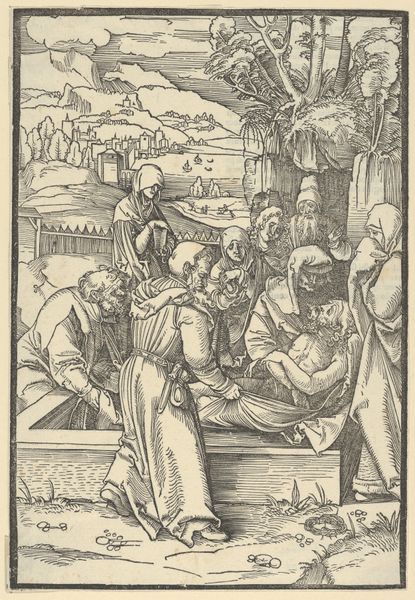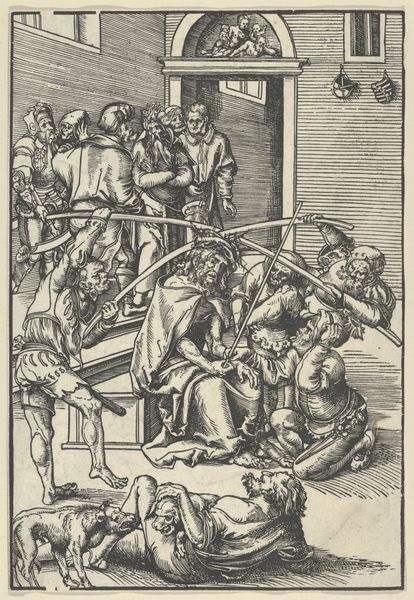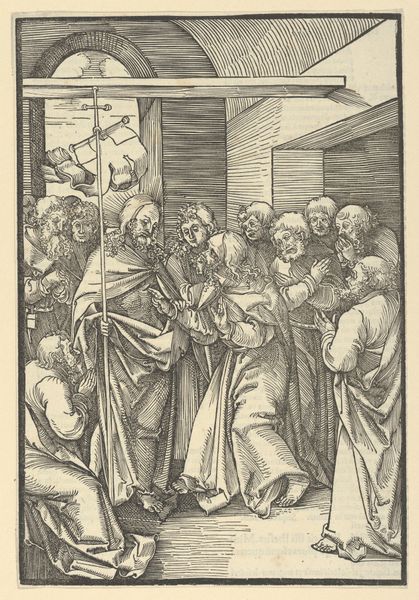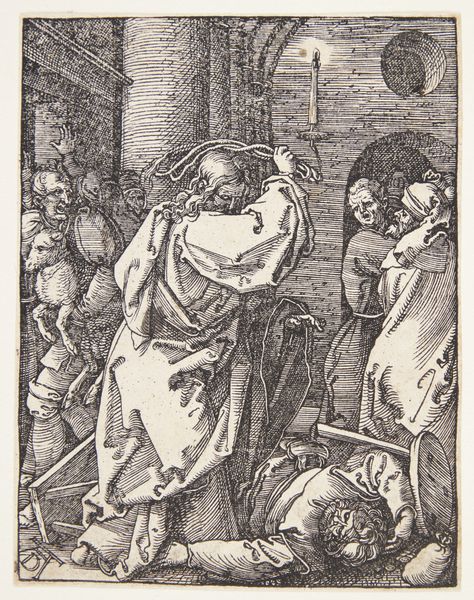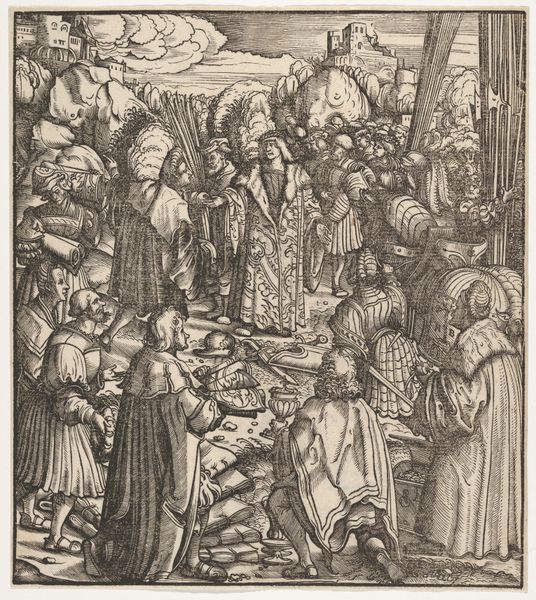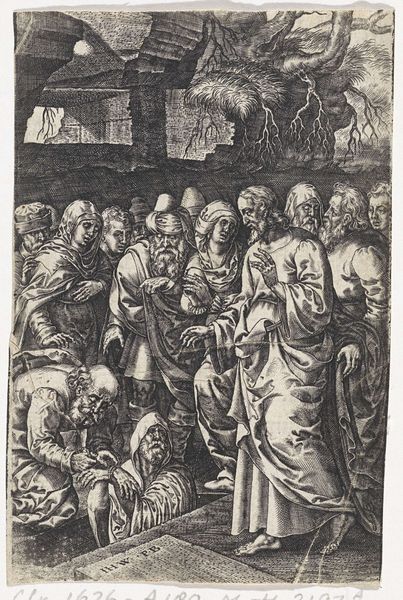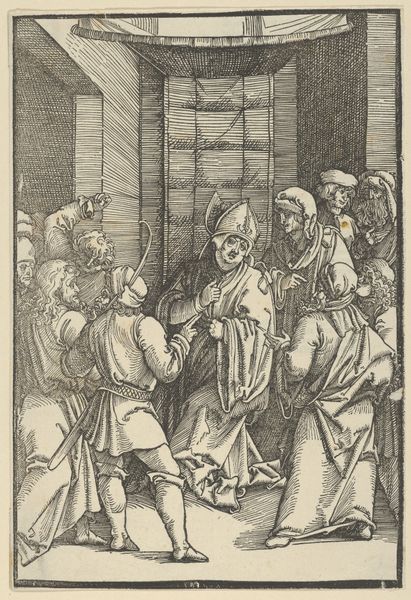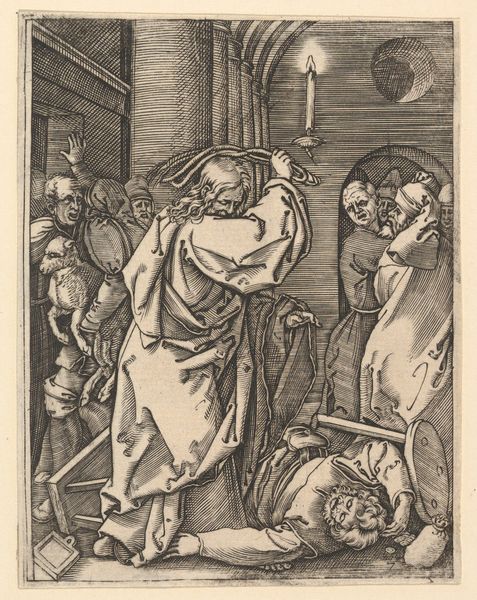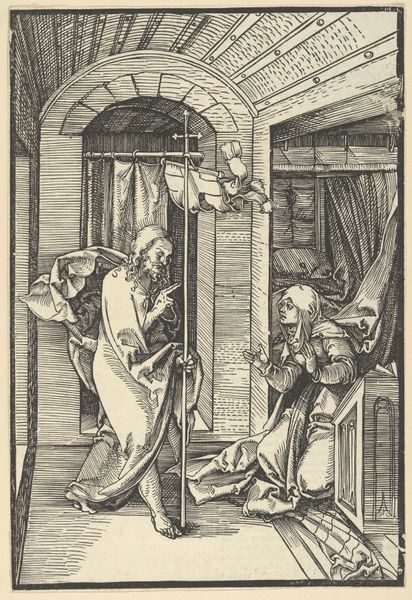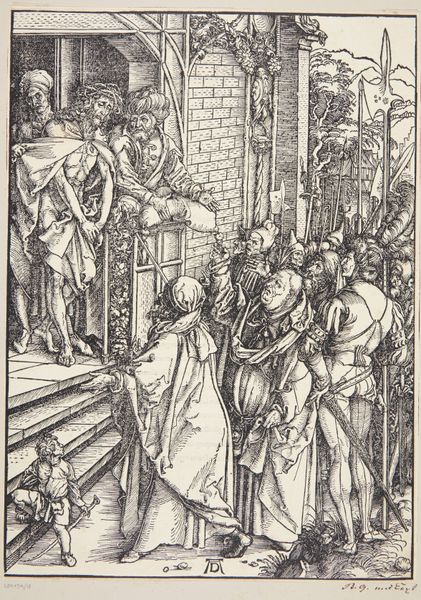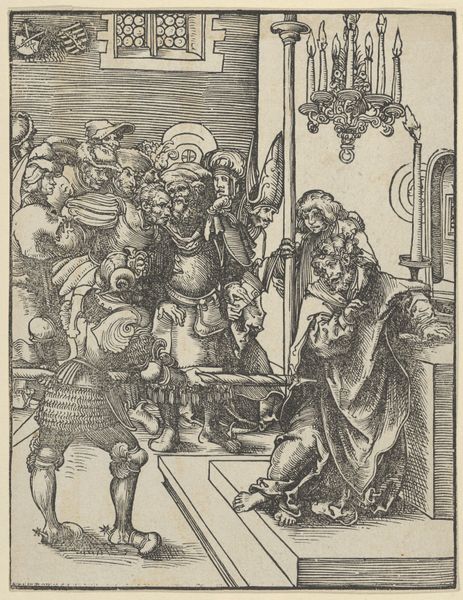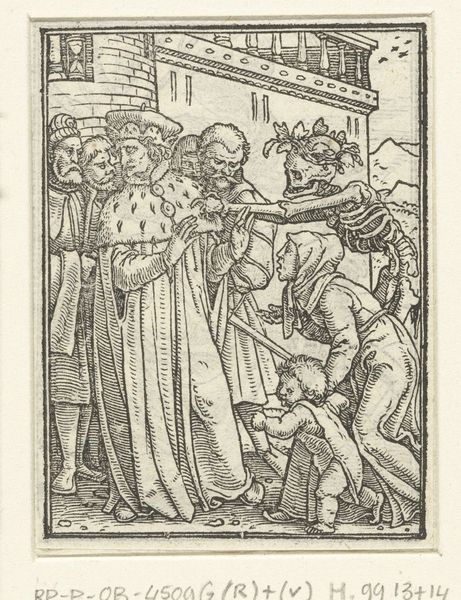
The Resurrection, from Speculum passionis domini nostri Ihesu Christi 1507
0:00
0:00
drawing, print, woodcut, engraving
#
drawing
#
pen drawing
# print
#
pen illustration
#
figuration
#
soldier
#
woodcut
#
history-painting
#
northern-renaissance
#
engraving
#
christ
Dimensions: Sheet: 9 3/8 × 6 7/16 in. (23.8 × 16.4 cm)
Copyright: Public Domain
Editor: Here we have Hans Schäufelein’s woodcut, "The Resurrection," created in 1507. It's a striking black and white image depicting Christ's resurrection. What particularly catches my eye is the intricate detail achieved through the printmaking process. What's your take on it? Curator: Well, immediately I see a piece deeply entrenched in the social and material conditions of its creation. Consider the woodcut medium itself. It’s relatively accessible, lending itself to wider distribution than, say, a painting commissioned for a wealthy patron. We should ask ourselves how the labor involved in producing this print affected its dissemination and its impact on the viewers. Editor: That's an interesting point. It’s easy to overlook the labor involved when focusing solely on the image itself. So, the choice of woodcut, the physical act of carving… How does that tie into the reception of the work? Curator: Think about it: Woodcuts, like this, become reproducible. This availability made images and, more importantly, the narratives they carried, more widely accessible, influencing popular piety. It moves religious iconography away from the sole purview of the wealthy elite who could commission artworks. Consider too, the cultural implications of these images circulating within a market driven by religious sentiment. Were these artisans producing objects of sincere religious significance or were they driven by economics of the print market? Editor: It's fascinating to think about this print not just as a religious image, but also as a commodity. Looking closely, you see how skilled the artisan was, using cross-hatching and various cuts to produce subtle tonal variety. This detail and accessibility probably contributed to its demand. I hadn't considered that relationship before. Thanks! Curator: Exactly. Focusing on the materiality opens a different perspective of this work and encourages critical examination of production, circulation, and the economies intertwined with faith and art.
Comments
No comments
Be the first to comment and join the conversation on the ultimate creative platform.
